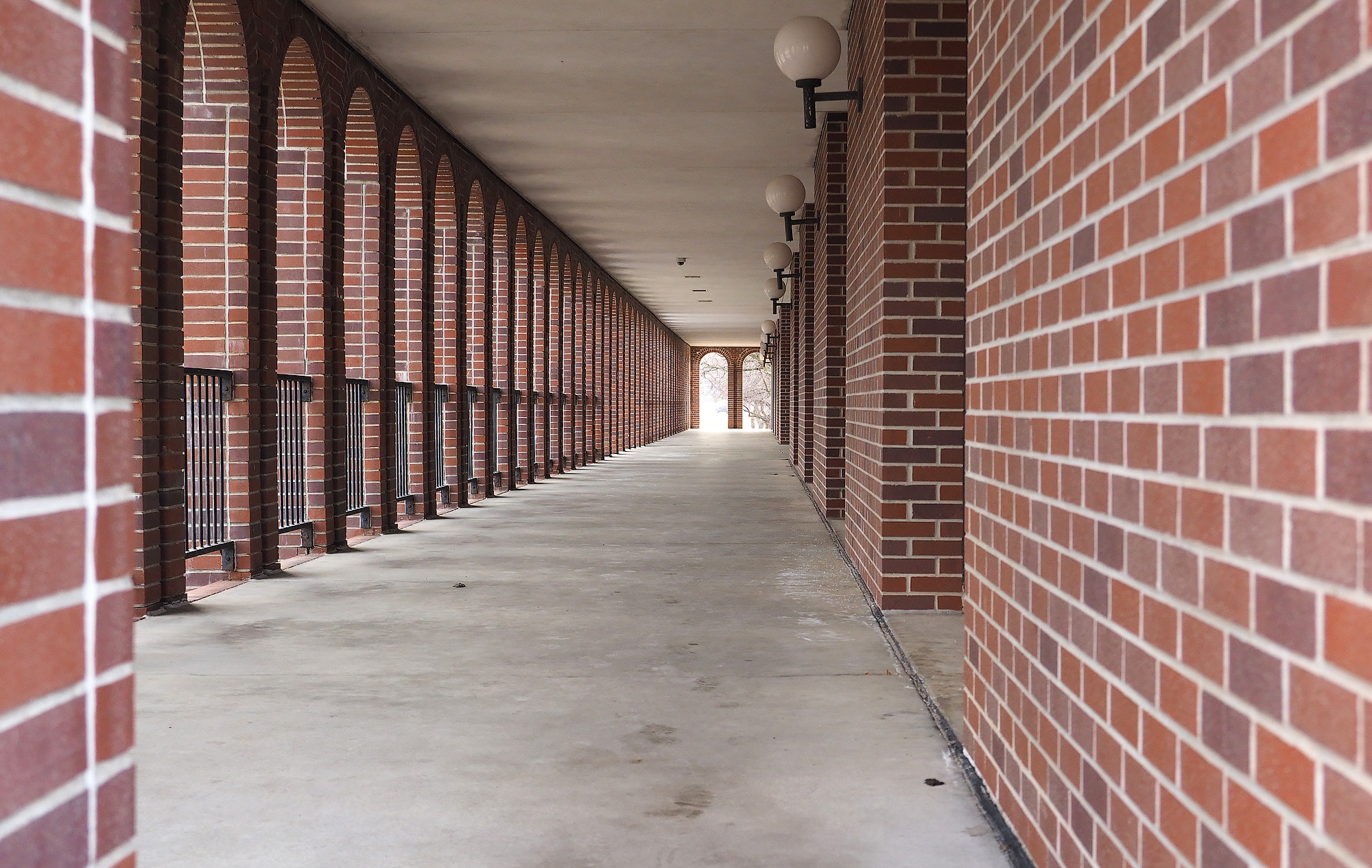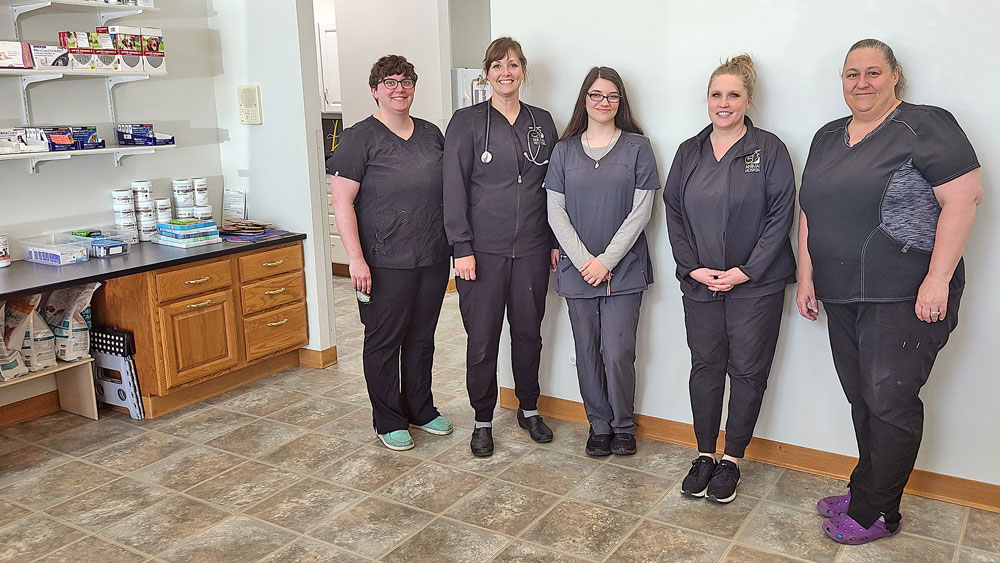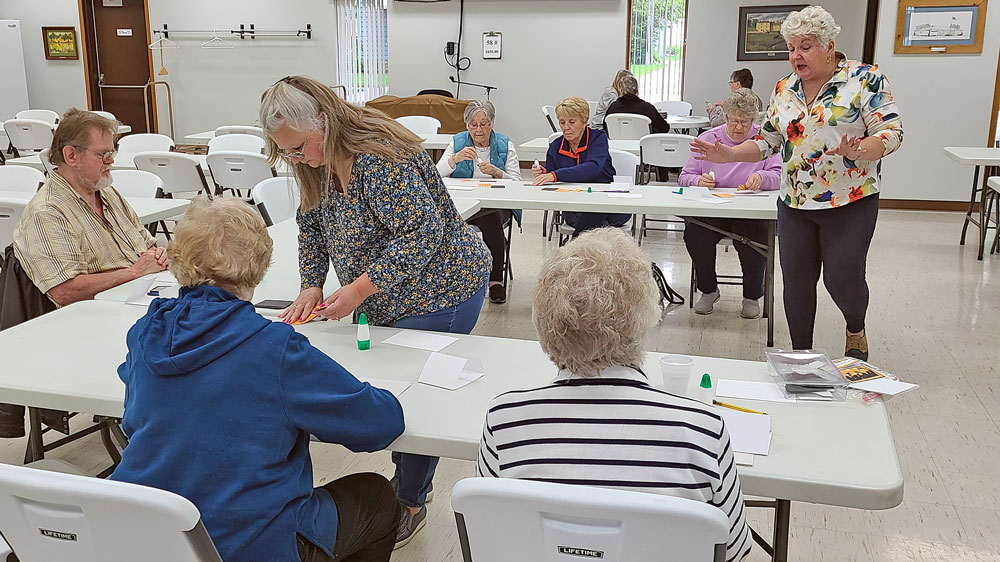School board tours high school to examine building needs

By Travis Fischer, tkfischer@charlescitypress.com
The Charles City School Board members took a tour of the high school on Monday, May 12, to see what needs in the building would be addressed by a possible renovation project.
Guided by representatives of FEH Design, the school board and administrative staff walked from one end of the high school to the other to see first hand the myriad of ways that the high school has fallen out of compliance with modern building codes over the last 50 years.
FEH architects have been spending time in the building recently, observing classes in action and cataloging all the different issues that could be addressed.
To the school’s credit, the architects complimented the work that the district has done to address its needs over the years in lieu of a major building overhaul.
“The district has done a phenomenal job making do with what they have here,” said FEH Principal Architect Chris Wand.
From ADA compliance to fire code regulations, virtually every area of the high school has issues that range from minor to potential risks of legal liability.
“Not one fire extinguisher in this building, except maybe in the middle school, is at the right height,” said Wand.
Outside of code compliance, the architects also discussed cosmetics, such as the building’s ceiling and lighting, and the importance of presenting an appealing first impression when it comes to attracting students and staff.
“It’s a competitive world for schools and students right now,” said FEH Education Facility Planner Bill Decker.
Knowing that cost will be a major determining factor in whether or not a bond referendum for the project will pass, FEH is in the process of developing a plan to address the needs for up to 49.4% of the building, which would allow for as much work on the building to be done as possible without being forced to bring the building 100% up to code.
“If you go over 50%, then you need to bring the entire building up,” said Wand.
The next step for FEH will be revising its concepts for the building and begin work on developing cost assessments. They hope to be able to bring a rough idea for a project cost to the full board for its meeting on June 9.
In the meantime, the tour highlighted both the need and the urgency for the high school renovations.
“We just wanted to show you what you’re getting into,” said FEH Vice President Matt Basye. “It’s going to be worse to keep kicking this down the road.”
Prior to the workshop tour, the board met for its regular meeting, which began with a presentation from Middle School Robotics Coach Patrick Nyberg and members of the 8th grade robotics team about the growing program.
Cosmic Snowballs members Isaac Gassman, Carter Mack, and Sierra Hinz demonstrated their Lego robot and answer questions about how competitive robotics works.
Since forming last year, the Cosmic Snowballs have been a breakout success in Iowa’s FIRST Lego League, standing among the top teams out of about 300 in the state, most of which come from much larger school districts.
“The team will spend weeks, or even months, to develop code to send the robot around the board,” said Nyberg.
The Cosmic Snowballs are currently preparing for a trip to Massachusetts where they will compete in the WPI Annual First Lego League Event, an international contest featuring more than 100 robotics teams from around the world.
In other business, the board approved a resolution to authorize a retention bonus of $1,500 for special education teachers, who have been going above and beyond to keep up with high caseloads in face of staff shortages.
The board also approved a 28E agreement with Rudd-Rockford-Marble Rock to share curriculum services, allowing Curriculum Director Dr. Jennifer Schilling to work one day a week in the district.
On the subject of curriculum, the board approved the purchase of a fifth grade language arts curriculum along with related literacy intervention curriculum.
Finally, the board approved the second reading of a series of policy updates to eliminate gender identity as a protected class – to be in compliance with state law, along with new policies for electronic devices to go into effect for next year.
The colloquial “cell phone” policy prohibits the use of devices during instructional time. Personal devices must be silenced or turned off and must not be visible during instructional time. Wrist worn devices may be worn, but cannot be used.
Devices that have been authorized for a students individual education plan are exempt from the policy and parents may request that administration allow a student to retain access during instructional time if a legitimate reason can be offered.
Violations of the policy can result in the student being asked to turn in their device to building administration until the end of the school day. Subsequent violations can result in meetings with the student’s parent or guardian.









Social Share